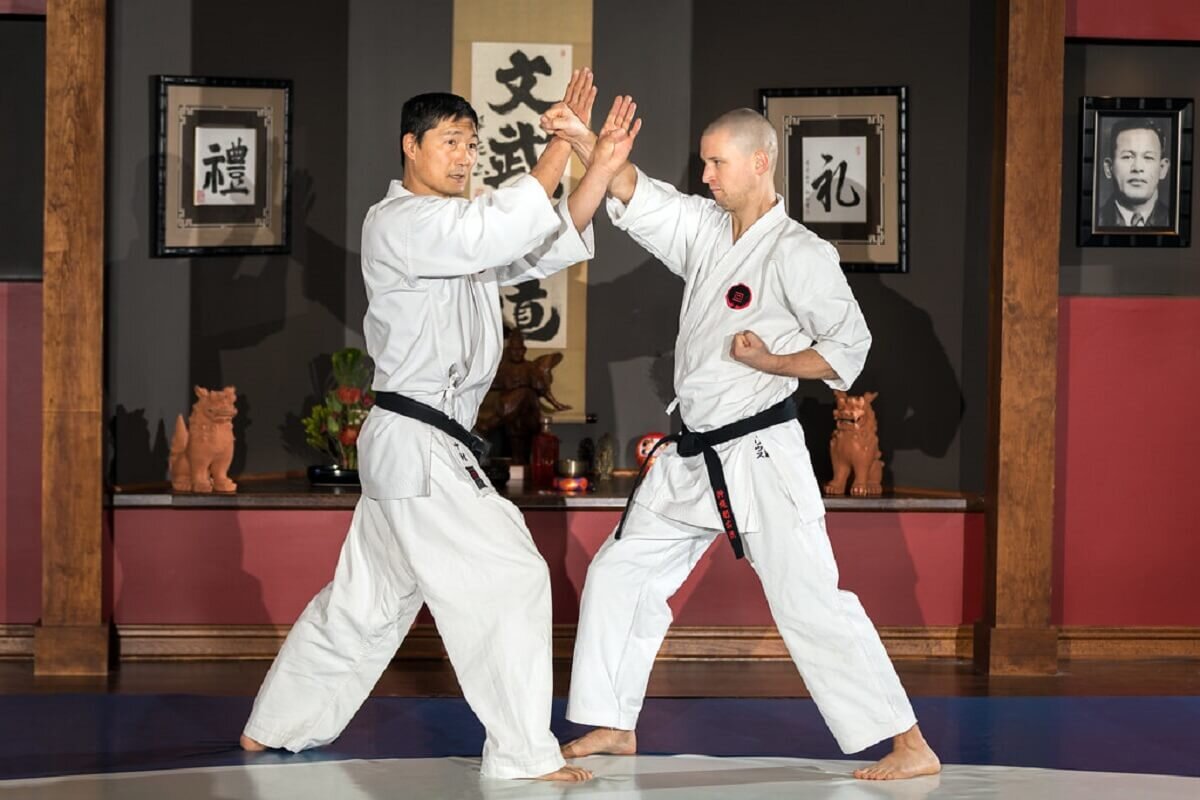The Path to Black Belt: The Karate Belt Ranking System and Belt Order Explained
Achieving a Black Belt: A Guide toThe Karate Belt Order and Karate Belt Ranking System
Karate has a long and illustrious history as a kind of martial art. The belt system, on the other hand, is a relatively modern addition to the art.
The kyu/dan grading system has been used to grade the development of Karate practitioners since the turn of the twentieth century.
To this day, many current Karate styles take from the Judo kyu/dan ranking system. Instead of demonstrating mastery, the "Black Belt" was intended to demonstrate competence. The journey doesn't end with a black belt.
Which Ranking Systems Do Different Karate Styles Use?
Belt colours and ranks now vary widely, depending on the style, school, and even country. This means that in martial arts, the most frequent colours for belts are: white, yellow, orange, green, turquoise, blue, brown, and black.
There are 4 main styles of Karate, which differ in technique, practice and philosophy, but they all follow a belt principle of some sort for grading and measuring achievement.
The six-kyu system of Karate raking is listed below. There are karate styles that use kyu systems of 8, 9, 10, and even 12.
Levels of Kyu (student levels)
Kyu rankings are used in Karate (as well as many other Japanese arts) to denote a student's progress in the technique. "Mudansha" is the name given to the practitioner at this point. Karateka (Karate practitioners) move sequentially down the kyu grades as they develop.
Therefore 1st Kyu (or brown Belt) is the most advanced "student" level.
The Karate Belt Order
What is the Karate Belt Order: The Belt Color Order for Karate
White Belt (6th Kyu)
Karate's journey begins with a white belt, which represents the beginning point.
New Karate students don't yet know how to control their thoughts or body and thus their white Belt represents both their pure nature and devotion to Karate, which they will grow and develop as they progress in the sport.
Yellow Belt (5th Kyu)
The yellow Belt, like all other belt levels, is earned by passing a test. As the learner progresses through the ranks, they begin to grasp the fundamentals of Karate.
Orange Belt (4th Kyu)
An orange belt is given to a pupil who has begun to master the fundamentals of Karate. General management ideas begin to make sense to them.
Green Belt (3rd Kyu)
The learner begins to hone his skills at the green belt level. They gradually improve in terms of self-defence and the mechanical application of the skills they learn. Green belts have a better sense of their opponent's moves than their black belt counterparts.
Blue Belt (2nd Kyu)
Students begin to demonstrate more mastery of their skills and their minds at the blue belt level. They have a lot of control over their opponent when they're sparring. They are more capable and self-assured while defending themselves.
In addition, they've improved their ability to count as time has gone on.
Brown Belt (1st Kyu)
The brown belt rank is the highest in the karate hierarchy. The student's martial skills and mental maturity have matured to a certain degree at this time.
By the time they reach the rank of Brown Belt, students have mastered the mechanical execution of Karate techniques and are increasingly adept at using them against a resisting opponent.
They have a greater understanding of physical conflict and fighting, which helps them defend themselves when necessary.
The next stage is the culturally mythical l Black Belt, which starts off the grading in the ‘Dan ranks’
Progression via the Karate Belt System
The aforementioned is just a rough estimate of how long it should take to advance through the Karate belts.
This is considered the minimum progression time, not the time it takes to obtain a belt in an organised manner.
Getting the next rank may take a while, but that's ok since the aim is to learn and grow as a person, not only achieve the next Belt.
Levels of Mastery Attained by a Black Belt
The Dan grades are the most advanced; this is the point when the true adventure begins. Yudansha is the title given to a practitioner who has attained the dan level.
From the 6th or 7th dan forward, depending on the style, there is no further test, with the rank being granted on an honorary basis by the headmaster.
Shodan (1st Dan)
One who has mastered the fundamentals of Karate.
Nidan (2nd Dan)
An expert karateka who has mastered the fundamentals.
The Sandan (3rd Dan)
One who has learned the fundamentals of Karate and is skilled in the art.
Yondan (4th Dan)
One who has mastered both the fundamentals and practical applications of Karate.
Godan (5th Dan)
An exceptional martial artist who has mastered both the fundamentals and practical applications of Karate.
Rokudan (6th Dan)
One who has mastered the true essence of Karate and is regarded as a master.
Nanadan (7th Dan)
An expert Karate practitioner who has understood the art's deeper meaning.
Hachidan (8th Dan)
An expert Karateka is one who has studied and practised the art for a significant period of time and has become extremely proficient.
Kyudan (9th Dan) and Judan (10th Dan)
Only the most deserving masters receive these prestigious honorary titles.
The Karate belt colours in Europe
There used to be only three belt colours in Karate: white, brown, and black. But that changed in 1935 when Mikinosuke Kawaishi began teaching Judo in Paris and he was credited with bringing the coloured belt system to Europe.
According to him, western students would progress quicker if they had a visible belt system that recognised and rewarded accomplishments on a consistent basis.
After a short time, Karate practitioners outside of Japan began to adopt Kawaishi's belt system to distinguish between black and white belts. After some time, the technique was adopted by Okinawa and Japan as well.
Nowadays, Karate belt colours vary from school to school and organisation to organisation. Therefore there isn't a unified global standard. This standard has made its way into the grading system for kickboxing, although has not been adopted by more traditional martial arts such as Muay Thai.
For more information on Karate and other different types of martial art, please feel free to check out our articles on Ninjutsu weapons, or even our beginner’s guide to MMA!
To learn about the Taekwondo belt system, and how Jiu-Jitsu grading works, click on these links!









